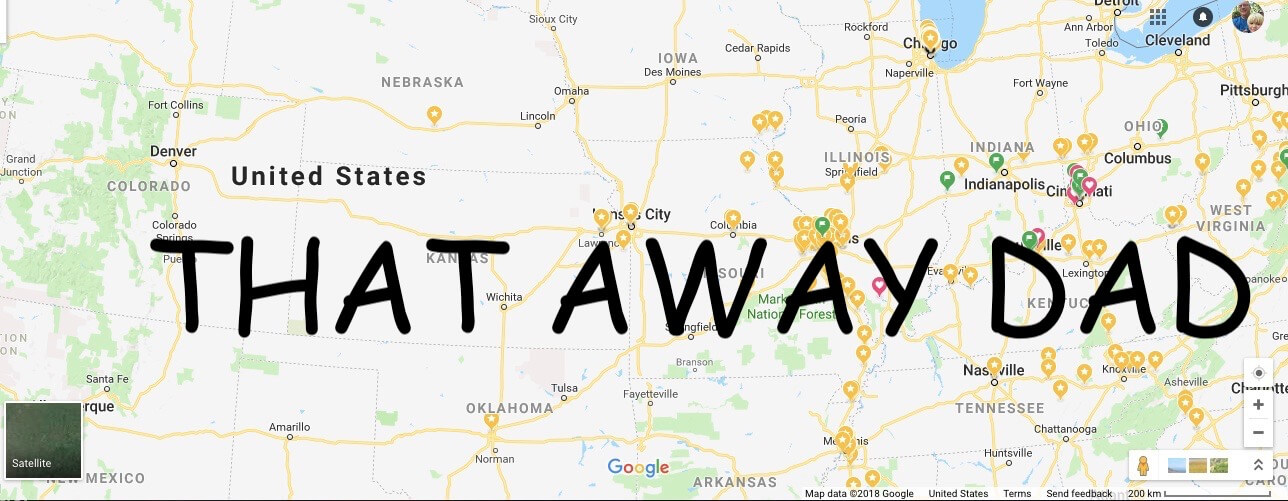You can travel back to the 1750s by visiting French Fort De Chartres, located an hour south of St. Louis and southeast of Waterloo, Illinois.
Built in 1753 by the French during their 18th-century colonization of Illinois Country, the massive stone fort was preceded by three wooden forts, with the first fort erected in 1720.
Fort de Chartres served as the French seat of government and its chief military installation in Upper Louisiana from 1753 to 1765. The current fort is a reconstruction of this French colonial stronghold in America.

OUR TIME HERE
We headed towards the fort along a paved path passing by a flag and information sign.

Next, we entered through the reconstructed gate.


You can go above it to a tower guard stand.

Next, we walked through the parade grounds and looked for a small sign that said Museum with an arrow pointed to the right.

MUSEUM
It is located in the King’s Storehouse which would have stored goods for trade along the Mississippi River.
Inside there are displays on the area and history of the fort.

One diorama shows the landscape of the area in the 1750s.

You can see the woodworking tools used at the time.

The fort served an agricultural community.

Native Americans also visited the fort to trade goods.

Plates, tools, and other artifacts show village life.

You can see a diorama of what life was like in the fort.

Maps visualize the territory of French Illinois.
The museum also has restrooms.
FORT GROUNDS
Next, we walked around the grounds.



Guard House
This building includes the Officers’ Room, Guards’ Room, Priest’s Room and Chapel, and a Gunners’ Room on the first floor.

Up in the loft was for storage of trade goods.

To the left of this building is the Heritage Shop where you can purchase souvenirs.

East Barracks
Next, we walked to the foundations of the original stone structure of the East Barracks.


Powder Magazine
The only original complete structure to survive and may well be the oldest building in Illinois.

Sentry Box
Where a sentry could look through an opening in the fort and be on guard.

Commandments House
Foundations of the original stone structure can be seen.
Other sites you can see listed on the pamphlet:
- River Gate– Fort entrance behind the museum
- Bake House: Partial foundation of original structure
- Banquette: Ledge at the base of the wall for defenders to stand on.
- Bastion: A four-sided work which projects from the main rampart.
- Government House: Foundations of the original stone structure.
- Dove Cote-Pigeonnier: Second of two wells inside the fort.
- West Barracks: Stone Foundation.
- Prison: The partial foundation of this structure.
FINAL THOUGHTS
If you want to see a reconstructed fort only an hour away from St. Louis this is the one to check out. The fort hosts numerous events to help you experience 1750s life. If you drive down Bluff Road there are several parks to hike at along the way.
EVENTS
Fort De Chartres hosts numerous events throughout the year:
- 4th Annual Fort de Chartres Rendezvous-June 1 & 2
- Fort de Chartres Colonial Market Faire-April 6 & 7
- Fort de Chartres Winter Rendezvous-November 2 & 3
- Prairie du Rocher La Guiannée at Fort de Chartres-December 31

DETAILS
Restrooms are also located at the picnic grounds along with a playground.

Drive: Take Interstate 255 across Jefferson Barracks Bridge then take Exit 6 going south on Illinois 3. Next, take the first exit and make a left onto Bluff Road. In Valmeyer make a left onto Illinois Highway 156 then a right back on Bluff Road going south. Then make a right onto Kaskaskia Road then a left onto Stringtown Road and the fort is on the right.
Admission: Suggested Donation: $4, Adults; $2, Children or $10, Families
Hours: Grounds are Open from Sunrise to Sunset. Museum and Display Buildings 10 a.m.-4 p.m., Wednesday-Sunday; Closed, Monday-Tuesday- These facilities are subject to staff availability.
Address: 1350 State Rte 155, Prairie Du Rocher, IL 62277
MORE HISTORIC FORTS AND BARRACKS

Exploring Fort Osage
Near Kansas City, Missouri, Fort Osage was constructed in the early 1800s under the direction of explorer General William Clark to protect U.S. pioneers.
Established in 1808 as a military outpost in the newly acquired Louisiana Territory.

Fort Belle Fontaine
The grounds of a former 19th-century U.S. Military installation and ruins of a popular summer retreat in the 1930s can be explored at Fort Belle Fontaine County Park in North St. Louis County.

Jefferson Barracks Park
Dennis Schick Trail includes historic sites and war machinery such as a World War II Sherman Tank in Jefferson Barracks Park in St. Louis County.


